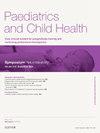在照顾残疾儿童和青年方面采用基于权利的方法:儿科实践介绍
Q3 Medicine
引用次数: 0
摘要
残疾儿童约占联合王国儿科人口的11%,其中一些儿童经常在社区和二级保健机构接受保健服务。他们不是一个同质的群体,每个孩子都有自己的身份、需求和信仰。然而,作为一个群体,他们特别容易受到歧视,可能更容易受到虐待和忽视。他们在发出自己的声音和实现自己的权利方面可能面临更多障碍。《联合国儿童权利公约》(《公约》)为残疾儿童作出了具体规定,并与其他一些旨在确保残疾人像同龄人一样过着充实和有尊严的生活的法律框架一起存在。本文将审查针对残疾儿童和青年的哪些人权规定,以及哪些工具可能有助于儿科医生和保健专业人员了解,以确保在作出影响残疾儿童和青年的决定时考虑到他们的权利。本文章由计算机程序翻译,如有差异,请以英文原文为准。
Using a rights-based approach in the care of children and young people with disability: an introduction for paediatric practice
Children with disabilities account for around 11% of the United Kingdom paediatric population and some attend frequently to healthcare services, both in the community and to secondary care. They are not a homogenous group and each child will have their own identity, needs and beliefs. As a group, however, they are particularly vulnerable to discrimination and may be more at risk of abuse and neglect. They may face additional barriers to having their voice heard and their rights fulfilled. The United Nations Convention on the Rights of the Child (UNCRC) makes specific provision for children with disabilities and exists alongside several other legal frameworks which aim to ensure that people with disability live as full and dignified a life as their peers. This article will examine which human rights provisions exist for children and young people with disability and which tools might be helpful for paediatricians and healthcare professionals to have awareness of to ensure that children and young people with disability have their rights considered when decisions are taken which affect them.
求助全文
通过发布文献求助,成功后即可免费获取论文全文。
去求助
来源期刊

Paediatrics and Child Health (United Kingdom)
Medicine-Pediatrics, Perinatology and Child Health
CiteScore
1.20
自引率
0.00%
发文量
70
 求助内容:
求助内容: 应助结果提醒方式:
应助结果提醒方式:


